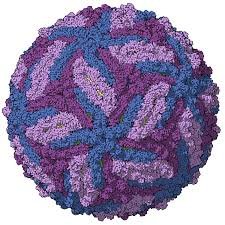
Singapore - The Journal Cell published data with a bi-specific antibody against Zika virus infection. The article is entitled, “A Human Bi-specific Antibody against Zika Virus with High Therapeutic Potential.” The study’s co-senior authors are Luca Varani, PhD, Group Leader, Structural Biology, Institute for Research in Biomedicine (IRB); Shee Mei Lok, PhD, Associate Professor, Emerging Infectious Diseases Programme, Duke-NUS Medical School (Duke-NUS) and Davide Corti, PhD, Chief Scientific Officer of Humabs BioMed.
The bi-specific antibody, called FIT-1, which comprises the specificities of both human antibodies ZKA190 and ZKA185, was designed by Humabs BioMed using its proprietary CellClone technology. ZKA190 is a potent Zika virus-neutralizing antibody shown to bind to all surface E proteins on the virus particle and able to distort the quaternary viral structure, while ZKA185 binds to a distinctly different site on the virus and helps prevent viral escape. FIT-1 was shown to potently neutralize strains of the Zika virus isolated around the world and the virus was unable to escape from it.
The interaction between virus and antibody was elucidated by a combination of experimental and computational techniques to understand how FIT-1 blocks the infection cycle. The work took advantage of a recently acquired IRB NMR (nuclear magnetic resonance) machine, the IRB being one of the very few laboratories where high resolution magnetic resonance is used to characterize antibodies.
Luca Varani, PhD, Group Leader, Structural Biology, Institute for Research in Biomedicine, said: “We have shown that Zika has a remarkable ability to change and evade the human immune response. We designed the FIT-1 bispecific antibody to overcome this problem. The strong collaboration of our research teams allowed us to characterize the interaction between Zika virus and the immune system, spanning from atomic interactions to the molecular level, 2 cells and finally the whole individual. The data we have reported support our design premise and provide a solid basis for bringing FIT-1 forward in development.”




